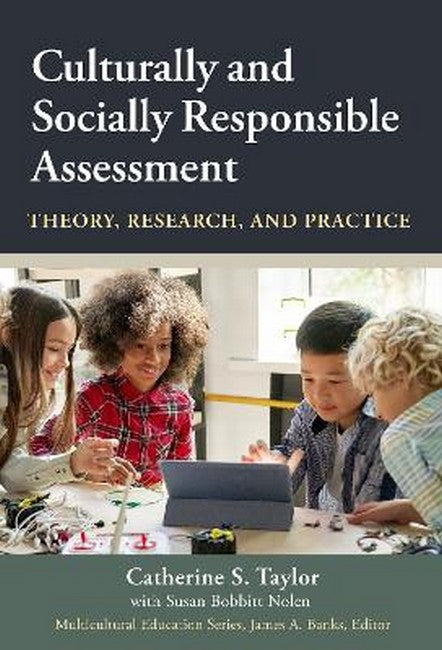Catherine S. Taylor and Susan Bobbitt Nolen are both professors emeriti in the College of Education at the University of Washington.
Request Academic Copy
Please copy the ISBN for submitting review copy form
Description
Contents Series Foreword?James A. Banks?ix Preface?xv Acknowledgments?xix 1.??Theoretical Perspectives on Assessment in Diverse Classrooms?1 Diversity in Schools?2 What Is Assessment??3 Validity Theory and Fair Assessment?3 The State of Classroom Assessment Practices?9 Improving the Validity of Classroom Assessment for Diverse Learners?15 Culturally Responsive Pedagogy and the Validity of Classroom Assessment?16 Communities of Practice and the Validity of Classroom Assessment Practices?18 Where Do We Go From Here??19 2.??Bias and Sensitivity Issues in Classroom Assessment?21 What Is Bias in Assessment??22 Impact of Teacher Attitudes and Beliefs on Formal and Informal Assessment of Students?24 Bias in Students, Scores on Tests and Other Assignments?29 Strategies for Minimizing Cultural, Racial, Gender, and Language Bias in Large-Scale Tests?31 Potential for Bias in Computer-Administered Tests?44 Potential for Bias in Published Classroom Assessments?45 Minimizing Bias in Classroom Assessments?45 The Role of Community in Reducing Bias in Assessment?50 Conclusion?51 3.??Culturally Relevant and Socially Responsive Assessment?52 Culturally Relevant Pedagogy?54 Culturally Responsive Pedagogy?57 Culturally Sustaining Pedagogy?61 Summary of Culturally Relevant, Responsive, and Sustaining Pedagogy?63 Culturally and Socially Responsive Assessment?64 Developing Culturally and Socially Responsive Assessment Tools?70 Culturally and Socially Responsive Assessment: Last Thoughts?81 4.??Student Engagement and Assessment?84 Student Engagement: A Review of Research?84 Factors That Improve Engagement of Students?86 Strategies for Increasing Student Engagement During Assessment Events?94 The Challenges of Making Assessment Engaging for All Students?101 5.??A Situative Perspective on Assessment in Diverse Classrooms?103 A Situative Perspective?104 Implications of a Situative Perspective on Classroom Assessment Practices?108 Communities of Practice and Culturally Responsive Assessment?112 Summary?117 6.??Developing Assessments for Diverse Classrooms?120 Development of Culturally and Socially Responsive Assessment Tools?120 Unpacking Standards for Relevant and Responsive Assessment?124 Models for Culturally and Socially Responsible Reading Assessment?125 Culturally and Socially Relevant Assessment in Social Studies?140 Culturally and Socially Relevant Assessment in the Sciences?145 The Challenge for Culturally and Socially Relevant and Responsive Mathematics Assessment?151 Books by Authors With Diverse Cultural and Social Identities to Support Reading and Social Studies Assessment?167 Concluding Remarks?169 7.??Resources and Tools?171 Part 1: Working in Communities of Practice to Examine Published and Teacher-Developed Classroom Assessments?171 Part 2: Resources for Teacher Learning Through Books About Assessment, Culturally Responsive Pedagogy, and Multicultural Education?176 Appendix A: Avoiding Bias in Grading Practices?185 Appendix B: Developing Culturally Relevant Performance Tasks?189 Appendix C: Bias and Sensitivity Reviews?196 Appendix D: Language Complexity Reviews?208 Appendix E: Questions for Accessibility Reviews?219 Appendix F: Academic Verbs Commonly Used in Testing?221 Notes?223 References?229 Index?255 About the Authors?267
"Culturally and Socially Responsible Assessment is a great reminder and outline for school personnel on how easily bias can arise, and how it can affect how we work with students in the classroom." -Teachers College Record "Culturally and Socially Responsible Assessment: Theory, Research and Practice serves as a practical text to introduce this aspect of multiculturalism in education and policy to practitioners, researchers, teacher educators and other stakeholders interested in developing and administering fair and valid assessments that represent the current diversity in American institutions." -American Journal of Qualitative Research

